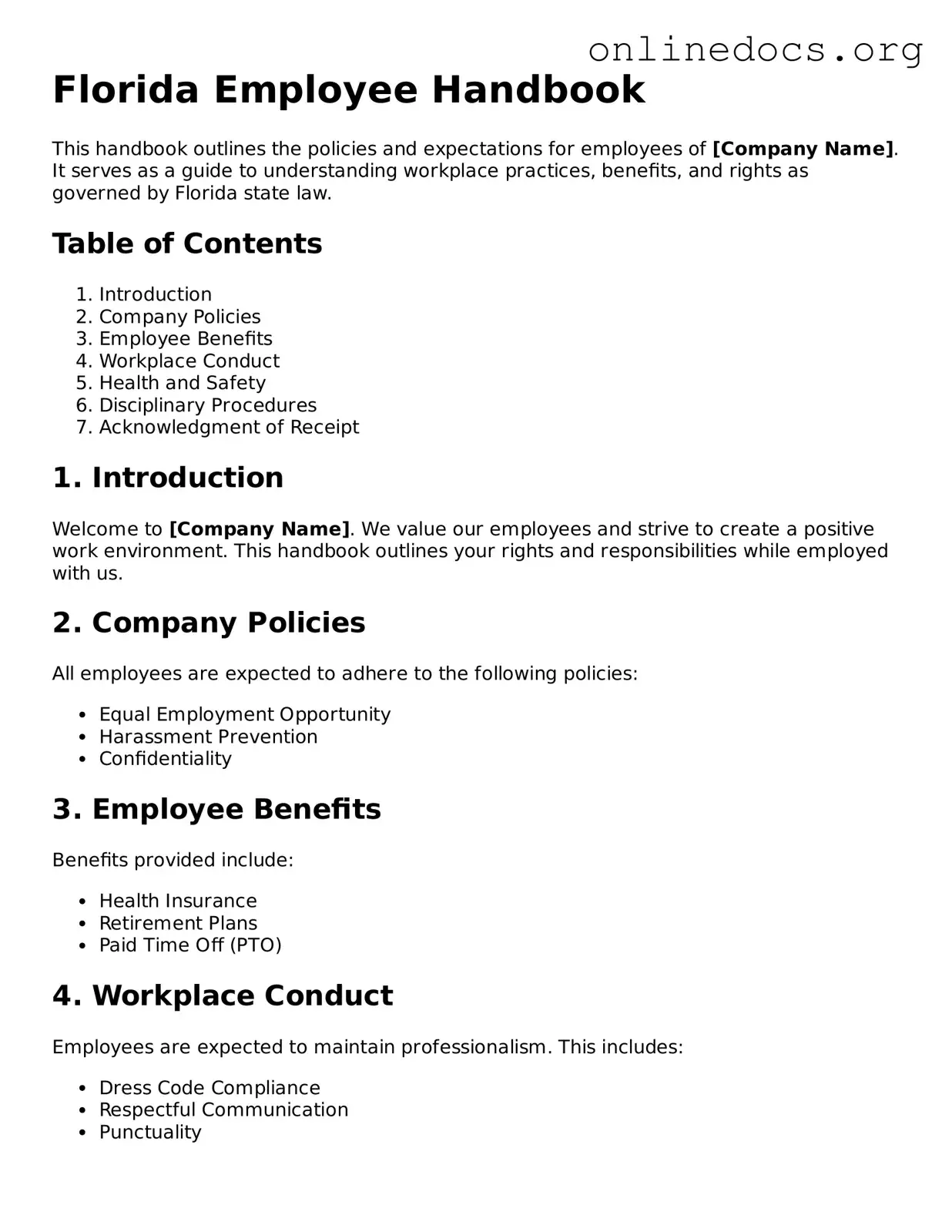Filling out the Florida Employee Handbook form can seem straightforward, but many individuals encounter pitfalls that can lead to confusion or complications down the line. One common mistake is failing to read the instructions thoroughly. It’s essential to understand what each section requires before putting pen to paper. Skipping this step can result in incomplete or incorrect information.
Another frequent error is neglecting to provide accurate personal information. This includes your name, address, and contact details. If these details are wrong, it can create issues with communication and record-keeping. Always double-check your entries to ensure they reflect your current situation.
Many people also overlook the importance of signing and dating the form. A signature is not just a formality; it signifies that you agree to the terms outlined in the handbook. Without a signature, the form may be considered invalid, leading to potential misunderstandings about your rights and responsibilities.
In some cases, individuals fail to update their information if they’ve had changes in their employment status or personal circumstances. Keeping your information current is crucial for maintaining accurate records. If you’ve recently changed your name or moved, make sure to update the form accordingly.
Another mistake is misunderstanding the policies outlined in the handbook. It’s vital to take the time to read and comprehend these policies. Misinterpreting them can lead to unintentional violations, which may have consequences for your employment.
Additionally, some people may ignore the sections that require acknowledgment of receipt of the handbook. This acknowledgment is important as it shows that you have received and understood the policies. Failing to acknowledge this can create complications later if questions arise about your knowledge of the rules.
Forgetting to ask questions is another common error. If something is unclear, seeking clarification is crucial. Many employers encourage open communication, and asking questions can prevent misunderstandings that could affect your job.
Sometimes, individuals rush through the form, thinking it’s a mere formality. Taking your time to fill it out carefully can save you from potential issues later. A rushed form may lead to careless mistakes that could have been easily avoided.
Moreover, people often overlook the importance of keeping a copy of the completed form for their records. Having a copy can be invaluable if questions or disputes arise in the future. Always retain a personal record of what you submitted.
Finally, failing to review the form before submission is a common mistake. A final review can help catch any errors or omissions that may have been missed initially. Taking a moment to go over your work can ensure that everything is in order and accurately reflects your situation.
